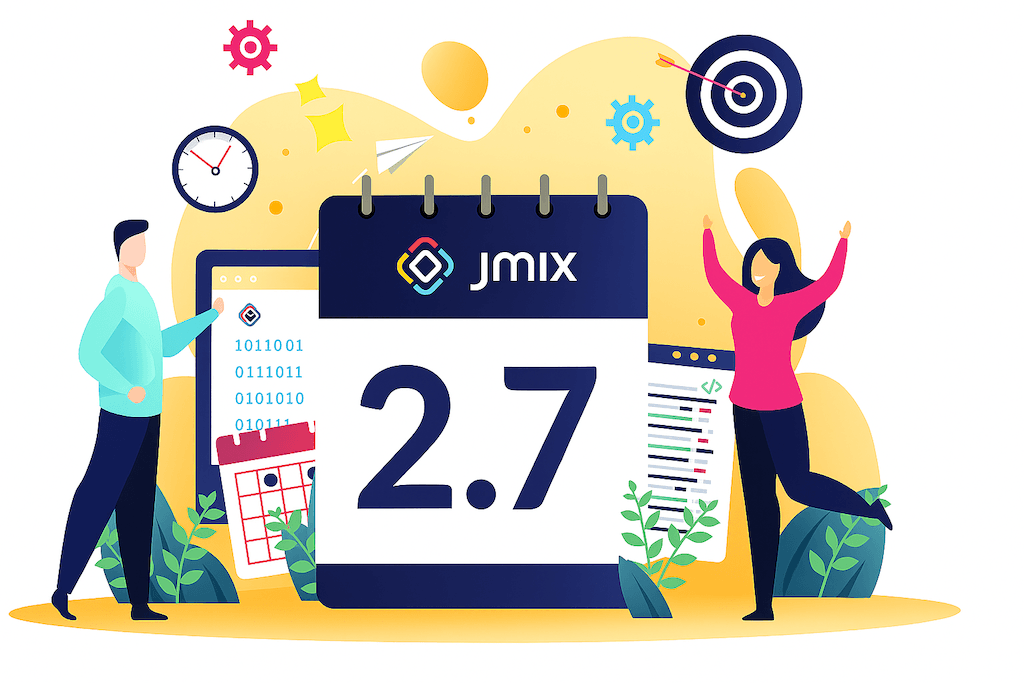We are pleased to announce the release of Jmix 2.7! This version introduces an updated Role Designer in Jmix Studio, new UI components, and includes a number of other framework improvements. You can view the full release notes at the What's New section of the Jmix documentation.
Below is a brief look at the main new features of Jmix 2.7.
Visual Role Hierarchy Management
The Role Designer now offers a clear visualization of role inheritance hierarchies, allowing you to see how permissions flow from base roles. Inherited permissions appear as read-only elements, and the Entities tab uses intuitive color-coding: green for enabled and red for disabled elements. This simplifies the process of auditing and managing complex security configurations.
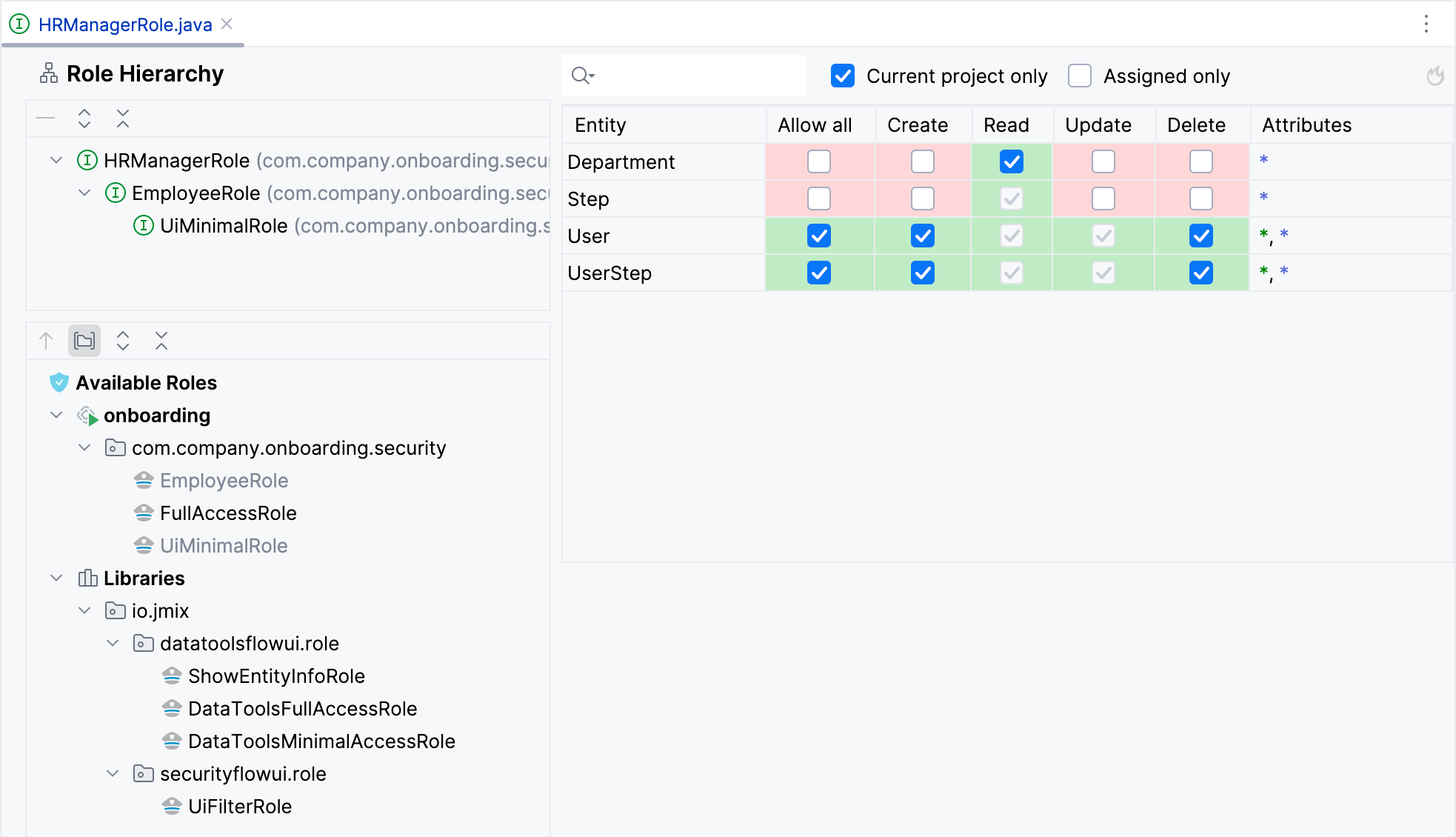
Add Attribute from DB
Check out the new "Add attribute from DB" option in the Entity Designer for database-first development. Simply create a column in your database table, then import it directly into your Jmix data model as a mapped attribute. No more manual syncing—Studio takes care of the boring tasks.
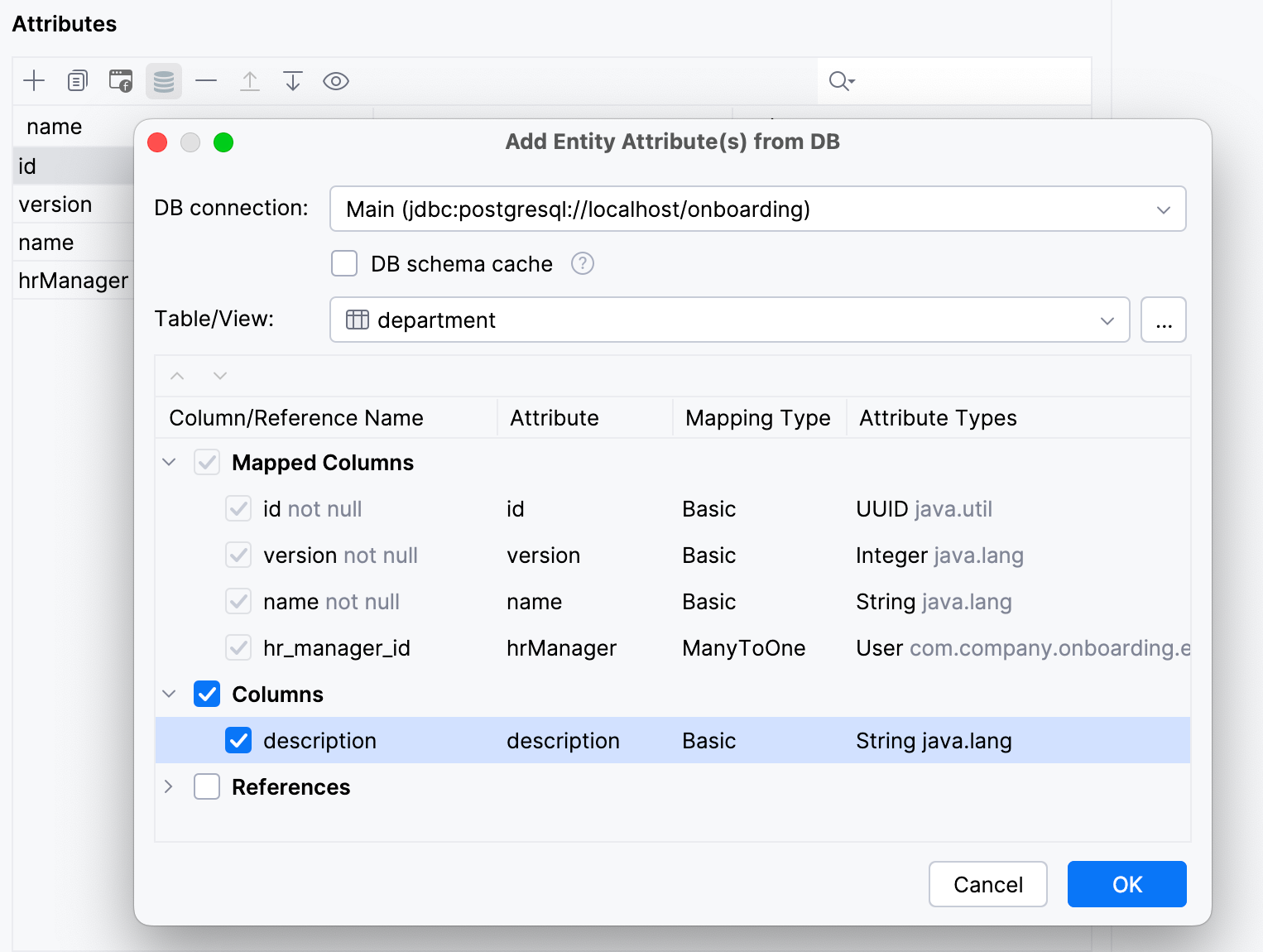
GroupDataGrid Component
The new groupDataGrid component can help you show your data more effectively. This data grid enables row grouping based on one or more columns, ideal for summarizing and analyzing datasets. Install the Grouping Data Grid add-on and explore the documentation for quick integration.
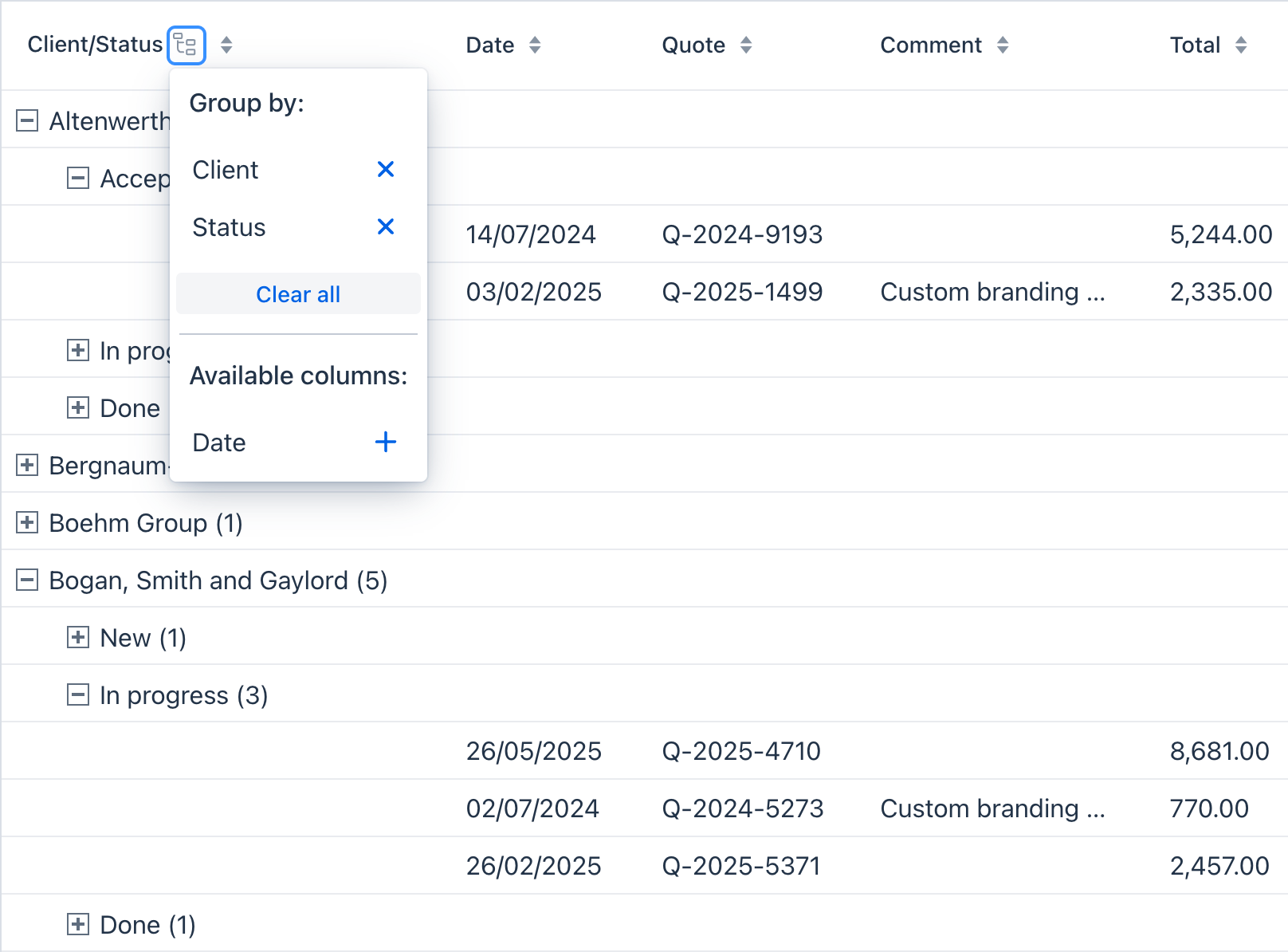
Card Component
Meet the new card container component, perfect for presenting related content and actions in a polished, modular format. Customize its layout and styling to fit your design needs, whether for dashboards or detail views.

GridLayout Component
Arrange components, cards, or fragments in a responsive two-dimensional grid with the gridLayout. Powered by CSS Grid Layout, it provides a flexible alternative to traditional data grids for complex, structured UIs that adapt seamlessly to different screen sizes. Plus, you can connect the gridLayout to a collection data container to render dynamic data sets.
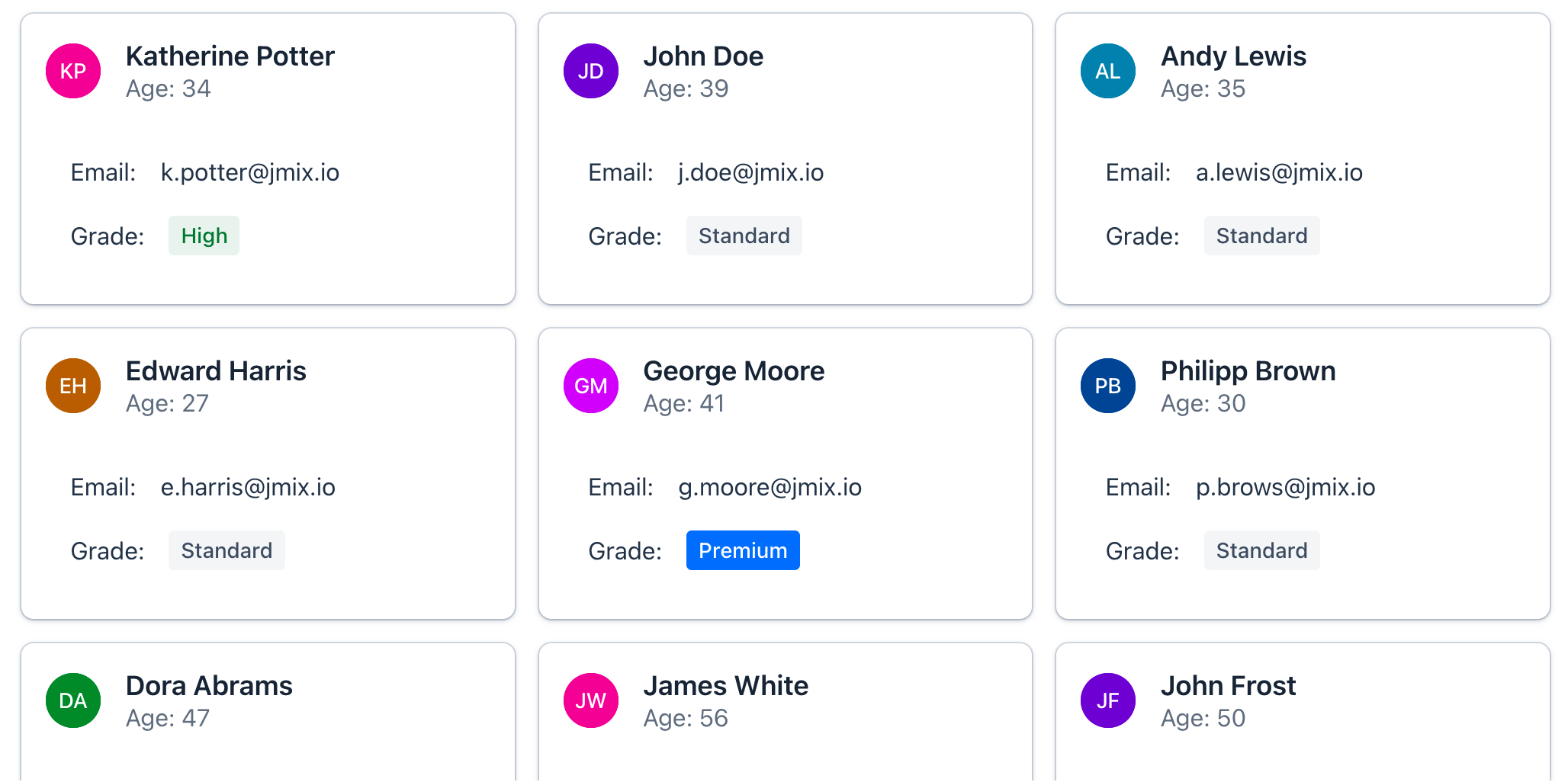
UserMenu Component
Enhance user interaction with the userMenu component, now included by default in new project templates. It displays the logged-in user alongside essential actions like "Substitute user" and "Log out" in a convenient dropdown. Add custom actions, nested items, or even other UI components for a tailored experience.
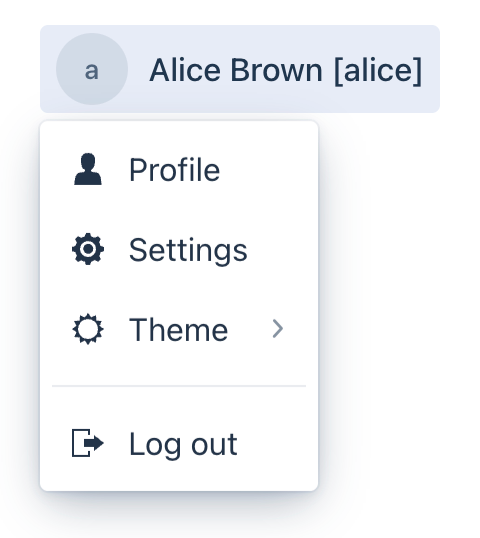
Date Filtering Enhancements
You can now filter by date easily with the "date equals" operation in genericFilter and propertyFilter. It ignores the time part, so you get the results within the date you’re looking for.
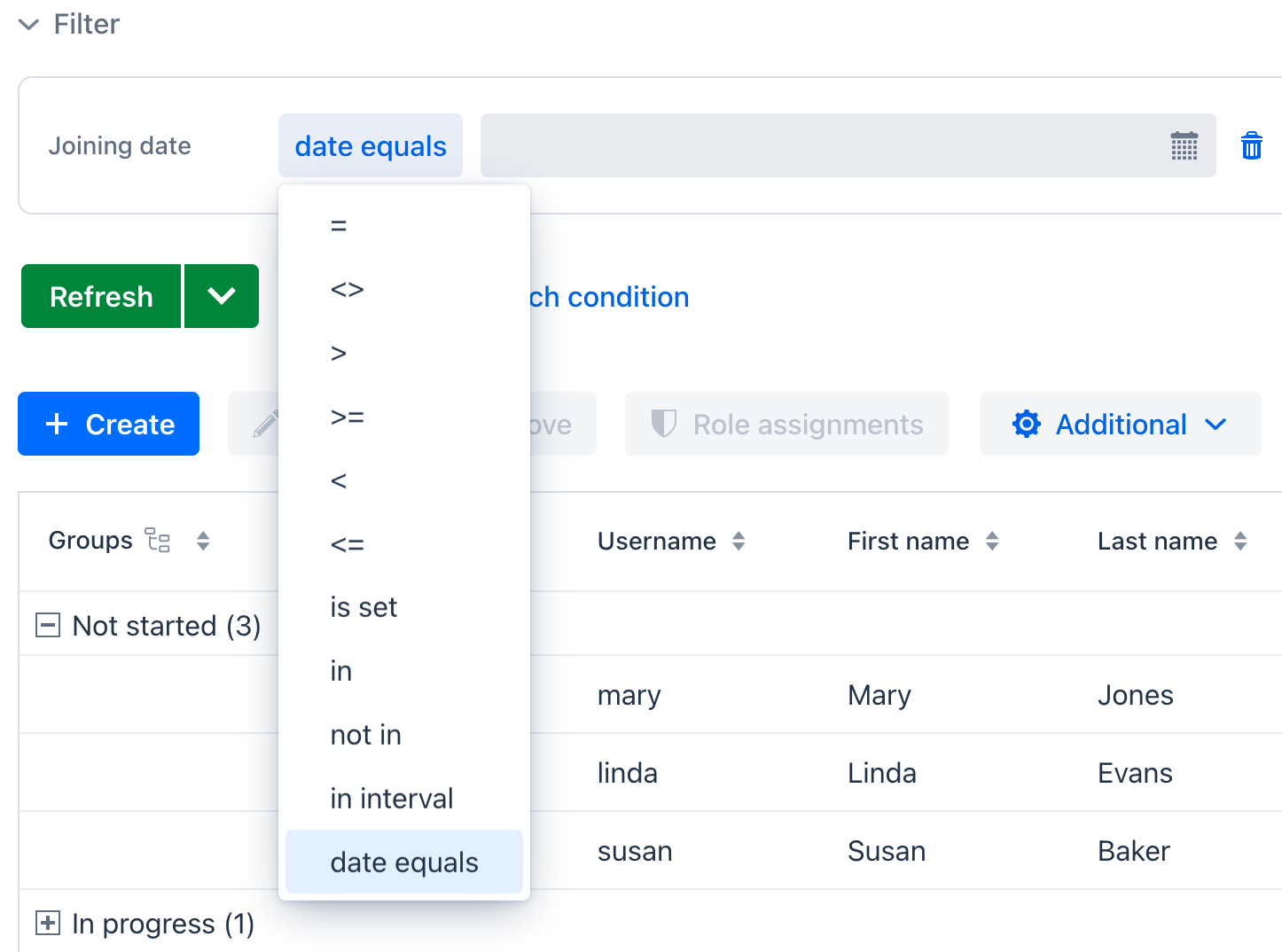
Plus, the Date Interval dialog now supports arbitrary start and end dates, replacing >= and < conditions with a single, intuitive control.
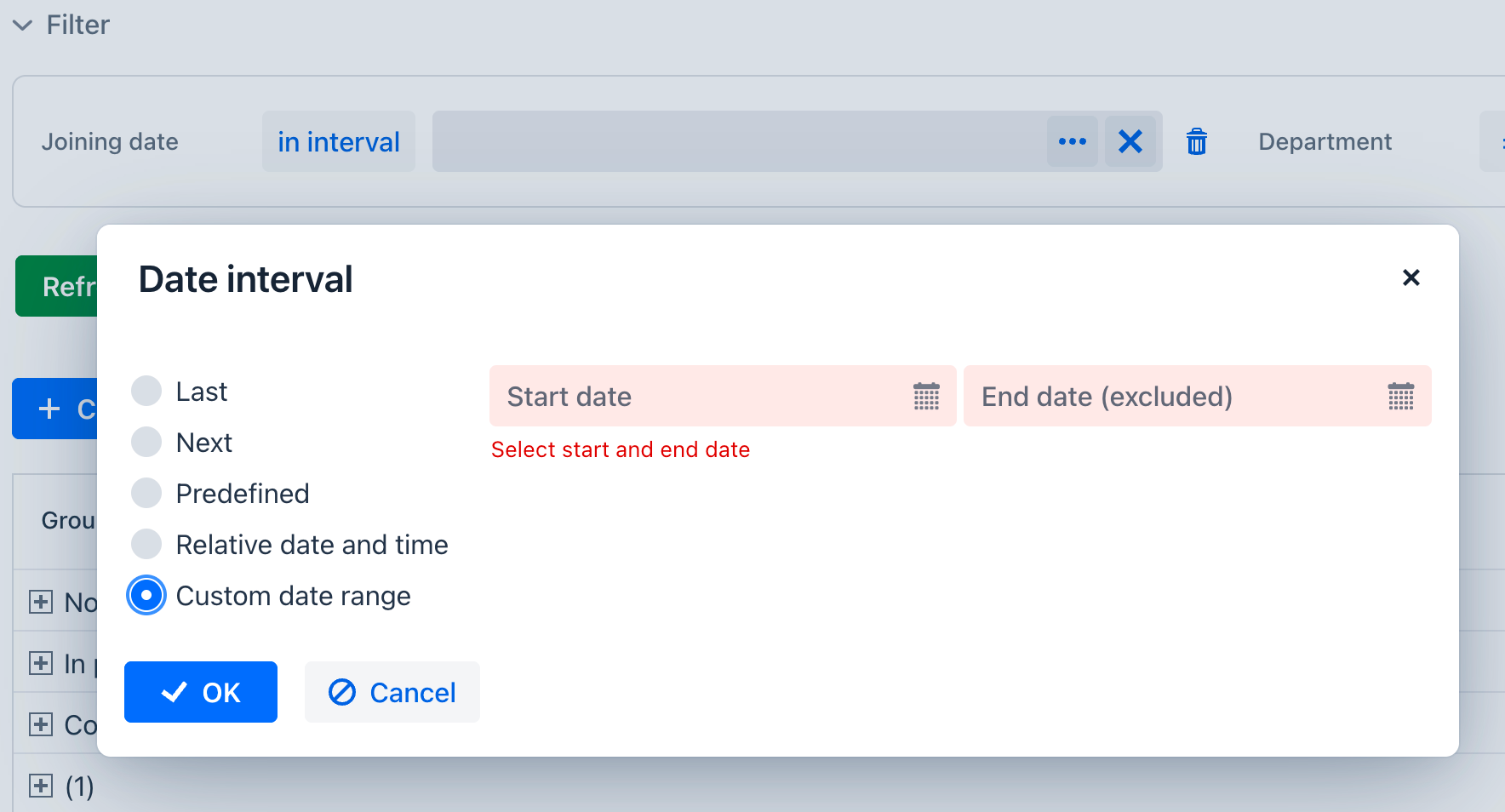
Data Repositories Enhancements
Data repositories in Jmix 2.7 became more powerful and convenient.
- JmixDataRepository now extends ListCrudRepository: all
findAll()methods now returnListinstead ofIterable. - Support for Scalar Queries and Aggregates: use
@Queryannotations to fetch scalar values or aggregates directly—perfect for metrics and summaries without full entity loads. - Pagination: Page vs. Slice: stick with
Pagefor full pagination info (including a COUNT query), or use the newfindAllSlice()for lighterSliceresults that skip the count, reducing database load. - New delegates for easier repository usage: invoke repositories in views with
loadFromRepositoryDelegateandtotalCountByRepositoryDelegate, that save you from explicitLoadContextconversions. These delegates are generated automatically when using data repositories in the View Creation Wizard.
Design-Time Reports
The Reports add-on now allows you to define report structures in Java classes at design time. Among the benefits: report definitions can be managed in version control (Git), you can debug report logic in your IDE, and updates propagate seamlessly across deployments.
Note that this approach prioritizes developer control but disables runtime modifications by end-users.
See examples in the See examples in the Report Generation Guide.
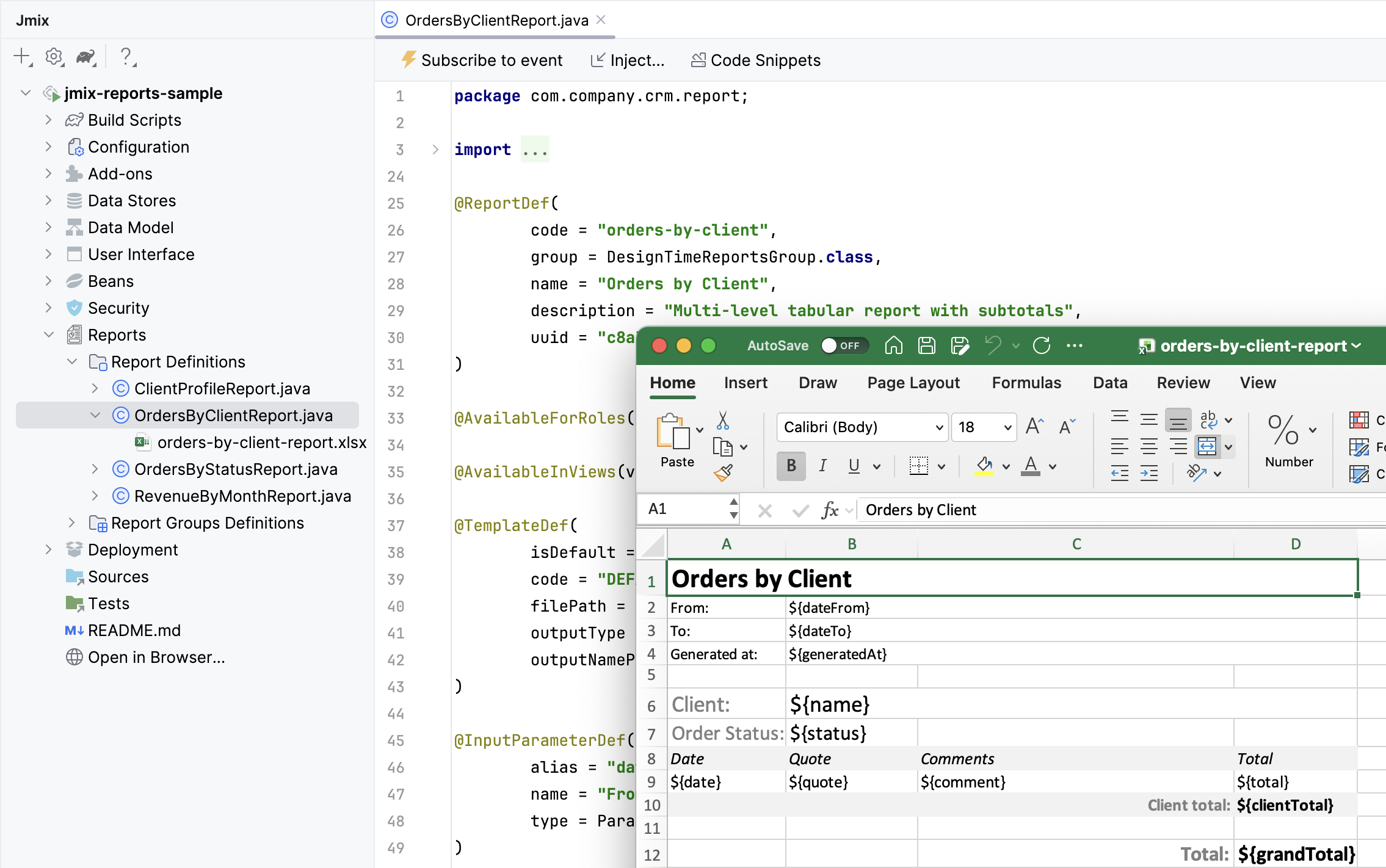
REST DataStore
The REST DataStore add-on now supports sharing of entities and service interfaces between integrated applications. This reduces code duplication and development efforts, but might cause tighter coupling between the applications.
Updated Dependencies
The Vaadin framework has been updated to version 24.9.
Future Plans
The next feature release is expected in February 2026. We're planning to do the following:
- Upgrade the technology stack to Spring Boot 4, Vaadin 25, EclipseLink 5
- Release SAML add-on
- Implement visualization of data model in a running application
Conclusion
Jmix 2.7 marks another step forward in making enterprise development easier and more efficient.
If you have a question, want to share feedback, or simply connect with others, join us on the forum or Slack.
Thanks to all in the community for your helpful input. We hope Jmix 2.7 helps your projects be even more successful!


